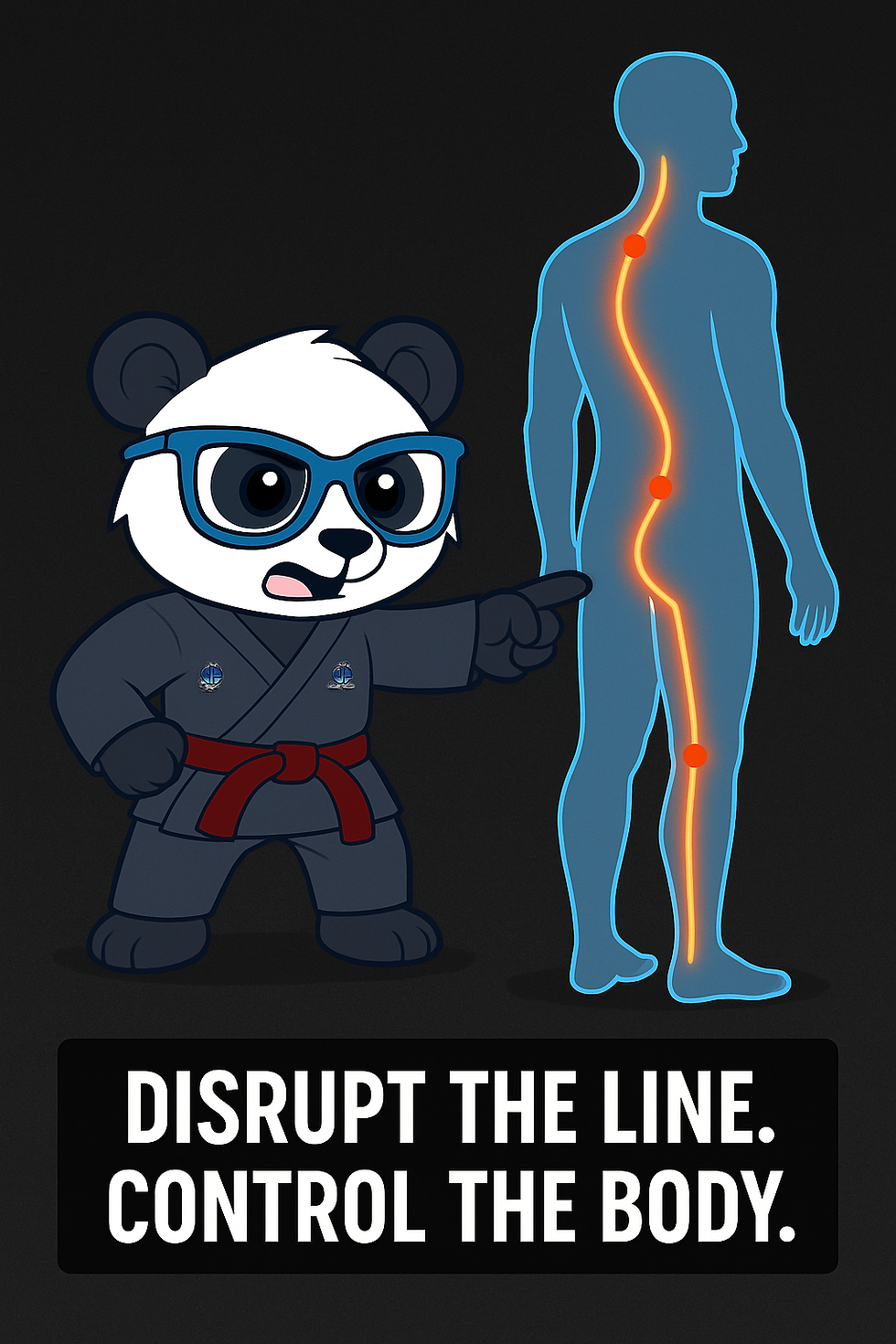🧵 Striking the Line: Using the Superficial Back Line in Kyusho and Tuite
- Jul 30
- 2 min read

By Matt Brown | Fierce Panda Learning Lab
The Superficial Back Line (SBL) is one of the most important fascial chains in the human body—and one of the most underused tools in pressure point and joint lock application.
This line runs from the bottom of the feet all the way to the top of the head—connecting your heels to your hamstrings, spine, neck, and scalp in one continuous sheet of tension.
🔍 Quick Breakdown: What Is the SBL?
The Superficial Back Line includes:
Plantar fascia (bottom of foot)
Gastrocnemius & hamstrings
Sacrotuberous ligament
Erector spinae (lower to upper back)
Occipital ridge fascia (base of skull)
Think of it like a rubber band stretching from heel to eyebrow. When you bend forward to touch your toes, that’s the SBL stretching.
🎯 Pressure Points Along the SBL
Here are just a few key Kyusho-relevant points directly on or influencing the SBL:
Point | Name | Function |
UB57 | Bladder 57 (mid calf) | Pain gate/Cramping reflex |
UB36 | Bladder 36 (glute fold) | Motor point of the hamstring; disrupts posterior chain |
GV3-GV14 | Governing Vessel (spine line) | Spinal Alignment, autonomic response |
GB20 | Gall Bladder 20 (base of skull) | Brainstem shock, revival & reset |
UB10 | Bladder 10 (upper neck) | Postural disruption, proprioception overload |
These points are not random—they’re strategic access ports to manipulate the fascial tension and nervous system of your opponent.
🥋 How It Applies in Kyusho & Tuite
1. Control Through Tension Release
In a basic takedown, striking or pressing UB57 (calf) or UB36 (glute) causes an instant collapse in the posterior chain—like cutting the power to a suspension bridge.
You’re not overpowering them. You’re unplugging their structure.
2. Amplify Your Throws and Sweeps
Applying pressure to GV3–GV5 (lower spine) during a sweep or lock amplifies the neurological effect through the SBL, making resistance extremely difficult—especially when combined with head/neck manipulation at GB20 or UB10.
This is why so many revivals and knockouts also happen through this line: You’re activating spinal reflex arcs and fascia-driven proprioceptive confusion.
3. Use SBL Locking for Tuite Amplification
Many Tuite techniques (like a basic S-lock or wrist turn) are more effective when:
You anchor the lower half (via a hamstring or calf point)
While rotating the upper half (via UB10/GB20 or shoulder points)
You’re literally twisting the fascial tension line like wringing a rope—and that’s why even small people can generate massive control with minimal effort.
Bonus: SBL Dysfunction = Kyusho Opportunity
Many people are already tight in their Superficial Back Line from sitting, poor posture, and lack of flexibility.
That means:
Their reflexes are primed.
Their stability is fragile.
Their fascia is easy to overload.
When you learn to read the tension in someone’s back line—you can decide whether to strike, lock, sweep, or simply unbalance them with a touch.
🐼 Final Thought
The Superficial Back Line is more than anatomy trivia—it’s a map.
If you know where the tension travels, You know where to interrupt it.
Train smart. Strike with purpose. And always look beneath the surface.
📘 Want more breakdowns like this?
Join the Fierce Panda Learning Lab and access detailed lessons on fascia lines, nerve pathways, reflex arcs, and biomechanical pressure point application:




Comments